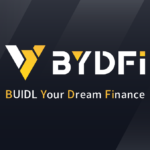Now Reading: Zero-Interest Home Renovation Loans: What to Know
-
01
Zero-Interest Home Renovation Loans: What to Know
Zero-Interest Home Renovation Loans: What to Know
:max_bytes(150000):strip_icc()/Zero-interest-home-improvement-loans-v12-9f841a986b0e4968ac625a37915025f9.png?w=1920&resize=1920,1267&ssl=1)
:max_bytes(150000):strip_icc():format(jpeg)/Zero-interest-home-improvement-loans-v12-9f841a986b0e4968ac625a37915025f9.png)
When financing a home improvement project, you have several options. You might choose a personal loan, a home equity loan, or, if you’re buying a fixer-upper, a specialized loan like an FHA 203k loan, which covers the purchase price and the cost of upgrades.
Depending on where you live, your home’s age and value, and often your income, you may be eligible for a zero-interest or subsidized renovation loan. While you may have to repay the amount you borrow, you won’t have to pay interest, saving you thousands of dollars on your project. Moreover, many programs will defer repayment until you move or the home is sold.
Key Takeaways
- Zero-interest or subsidized renovation loans are designed to upgrade residential structures, correct code violations, or improve energy efficiency.
- Some local governments and nonprofit organizations offer zero-interest or subsidized loans to help homeowners upgrade or repair their homes.
- Eligibility is often determined by income and home value, but not always.
- Subsidized loans may be part of a local government effort to revitalize its housing stock or to provide jobs.
What Are Zero-Interest Renovation Loans?
Some local governments and nonprofit organizations offer qualified homeowners interest-free loans for home repairs and upgrades. In many areas, they are known as Home Improvement Program (HIP) loans, home improvement or repair loans, or something similar.
Borrower and property requirements vary from program to program. Here are some examples:
- The Redevelopment Authority of Allegheny County in Pennsylvania sponsors the Allegheny Home Improvement Loan Program. It offers zero-interest loans of up to $18,000 for various improvements.
- King County, Washington, offers grants and loans through its Department of Community and Human Services. Homeowners can get up to $34,000 for repairs and upgrades via a deferred loan program that requires no payments until the home is sold.
- In Hennepin County, Minnesota, residents can apply for up to $30,000 in no-interest home repair loans. Borrowers do not have to make payments while they live in the home, and the loan may be forgiven.
- Habitat for Humanity offers a Home Preservation program that provides many construction services a homeowner might otherwise pay for with a zero-interest home improvement loan.
How Do Zero-Interest Renovation Loans Work?
Most HIPs target low- and moderate-income homeowners. To qualify, borrower income must fall below certain thresholds. Loan proceeds must be used for specific home improvements, such as accessibility (e.g., widening doorways for wheelchair access), lead or mold abatement, or energy efficiency improvements.
Eligibility Requirements
Eligibility details vary from program to program, but generally, borrowers need to meet income and residence requirements. For example, King County’s HIP, noted above, requires that borrowers:
- Own and live in the home
- Live in King County, outside the cities of Seattle, Bellevue, Kent, Federal Way, and Auburn
- Do not have more than $40,000 in assets (except equity in home, personal vehicles, and personal retirement accounts)
- Have some equity in the home
- Have eligible household income
Some programs, such as the USDA’s Single Family Housing Repair Loans & Grants program, are designed to assist older homeowners or homeowners who live in rural areas.
What You Can’t Use the Money For
Generally, borrowers cannot use HIP funds for cosmetic improvements like landscaping or “luxury” additions like pools or spas. Some programs may limit the number or types of appliances you purchase and whether or not they are considered “attached.” For example, a free-standing kitchen range might not be allowed, but a built-in one would be.
Where to Find Zero-Interest Renovation Loans
Not all regions and local governments offer zero-interest or subsidized renovation loans, but your local government is a good place to start. Check housing department websites for your city, county, and state governments. Use search terms like “Housing Improvement Program,” “HIP,” “repair assistance,” and the like.
Tip
The USDA’s Section 504 Home Repair Program provides up to $40,000 in repair loans and $10,000 in grants (if you are 62 years or older) on a state-by-state basis.
Alternatives to Zero-Interest Renovation Loans
Alternatives to zero-interest loans and grants include the familiar sources of home improvement financing.
- Mortgage refinancing: If you have equity in your home and a mortgage with a higher interest rate than the current rate, you can refinance to the cheaper rate and withdraw some of your equity to pay for your renovation. The downside is that you will pay some upfront costs, like origination fees, and you will extend the term of your loan.
- Home equity loan: A home equity loan (or a home equity line of credit [HELOC) is an additional loan that you take out to access the equity you have in your home without changing the terms of your existing or primary loan. There are upfront costs involved with both options that you should consider, and a long-term payment obligation, too.
- Personal loan: Some lenders offer personal loans up to $100,000 or more for home repairs. Generally, you will need good or better credit to qualify for a personal loan that big (since it is not secured by collateral, like a home equity loan is). Interest rates are higher, too.
The Bottom Line
Some cities, counties, and states offer zero-interest home renovation loans and grants. Eligibility requirements vary, but most include income ceilings and limitations on the types of repairs they’ll cover. The best way to find these programs is to check with local housing authorities. The federal government has some home improvement resources for veterans, native Americans, rural residents, and others seeking assistance.













:max_bytes(150000):strip_icc()/GettyImages-2097699016-226569edc0e24fada3f309bac8bbb0f6.jpg?w=1024&resize=1024,1024&ssl=1)
:max_bytes(150000):strip_icc()/INV_WorriedRetailInvestor_GettyImages-1636237804-e7c0e0c083b8480197c1261e71cc3f21.jpg?w=1024&resize=1024,1024&ssl=1)
:max_bytes(150000):strip_icc()/GettyImages-2051657007-dd17b882377e4c538cfc655c95135cf8.jpg?w=1024&resize=1024,1024&ssl=1)












:max_bytes(150000):strip_icc()/GettyImages-2097699016-226569edc0e24fada3f309bac8bbb0f6.jpg?w=150&resize=150,150&ssl=1)